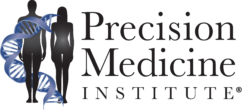Pioneer in precision prevention explains the shift to precision medicine in primary care, and the work of Sanford Imagenetics in creating precision medicine modules for physicians
“The concept of ‘precision prevention’ is to prevent or ameliorate disease, rather than be reactionary to its presence,” says Cornelius (Neal) F. Boerkoel, MD, PhD, a physician-scientist who has spent most of his career focused on identifying and treating genetic diseases.
In primary care, the opportunity exists for physicians to use data from a patient’s genotype to inform decision making, such as what drug to prescribe or disease predisposition to watch closely, says Boerkoel, Clinical Associate Professor at the University of British Columbia.
However, adoption of this technology in primary care settings is not widespread, he says, for a number of reasons.
Current Challenges of Precision Medicine in Primary Care
The first problem is that PCPs are generally not clamoring to learn how preventive precision medicine can enhance their practices.
“The issue here is we’re asking PCPs to be hungry for something that they don’t understand and haven’t experienced,” Boerkoel says. And psychologically speaking, people aren’t apt to want a tool for which they have no dependence, Boerkoel explains. “So before I have pharmacogenomics available to me, I have no dependence on its guidance as to what drug to prescribe to my patient. I don’t even know I need it or miss it,” he says.

As the Executive Director for Sanford Imagenetics Research Center on Genomic & Molecular Medicine and Executive Clinical Director of Sanford Genetics Laboratories, Cornelius (Neal) F. Boerkoel, MD, PhD, pioneered an approach to precision prevention.
Respecting Workflow
To overcome disinterest, the precision medicine community must engage clinicians to understand how genetic insight can help them treat their patients more effectively. At Sanford Imagenetics, Boerkoel and colleagues began this process by creating free online modules that physicians could use to learn about precision medicine and test their knowledge.
The next step, Boerkoel says, was to “engage them in the process and make it work within their workflow.”
In other words, physicians don’t want to be slowed down or deal with more stress. “So you have to come up with [implementation strategies] within the culture of the organization, and come up with a way to deliver this that doesn’t disrupt everyday life.”
Embedding the Genome into the EMR
A fundamental piece to understand is that a person’s genome needs be sequenced only once, and that information remains as fixed throughout a person’s life as his or her blood type. In the meantime, as scientific knowledge around genetic markers and mutations builds, clinical guidelines and recommendations around what to do with the information will evolve.
For that reason, a person’s genetic information should not be merely filed as a PDF into a patient’s medical record, but inserted into the EMR in such a way that makes it functional. “What we did at Sanford is inject into the medical record the discrete genotype or variant that one identified in the patient,” Boerkoel says. “That genotype then acts as a logical decision point.”
If a person has a pharmacogenetics variant that alters metabolism of certain drugs, that status is invariant for his or her lifetime. “It doesn’t matter how the FDA or other clinical guidelines change. You still have that logical trigger in the chart, which will always be aligned with current recommendations,” he says.
For instance, the American College of Medical Genetics and Genomics has recommendations today for 59 genes associated with roughly 20 disorders. As that list grows and recommendations evolve, the best practice alerts and guidelines can be readily updated, Boerkoel says. “The clinician never needs to understand the nuances of the genotype. They just need to understand that it’s a predisposition for a problem, and what to do about it is there in the alert or guideline.”
As a result, primary care physicians need not transfer patients to a specialty clinic for care using precision prevention, Boerkoel says. “That’s an important takeaway—that one need not set up a special clinic for precision medicine. This can be done within the community of the patient,” he says.
—Debra A. Shute
Related Information:
More about Cornelius (Neal) F. Boerkoel, MD, PhD
More Interviews with Early Adopters of Precision Medicine
Highlights from the American College of Medical Genetics and Genomics
